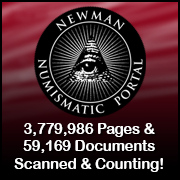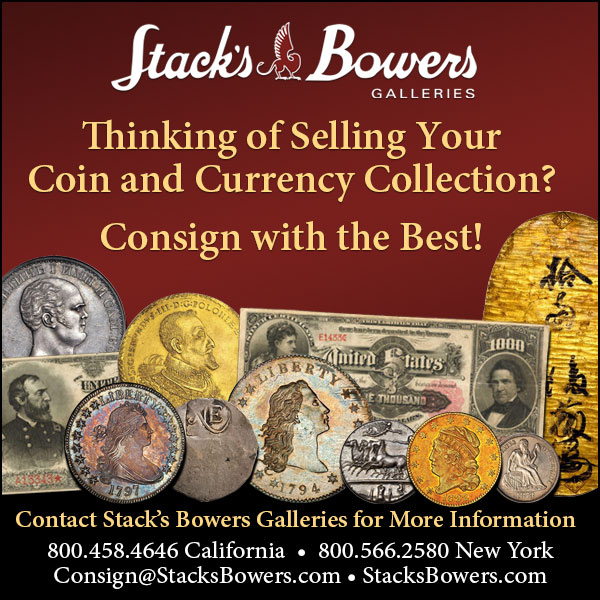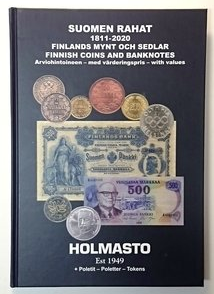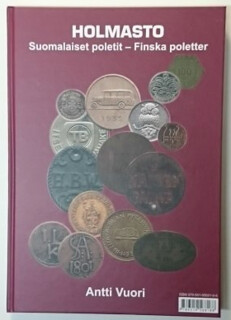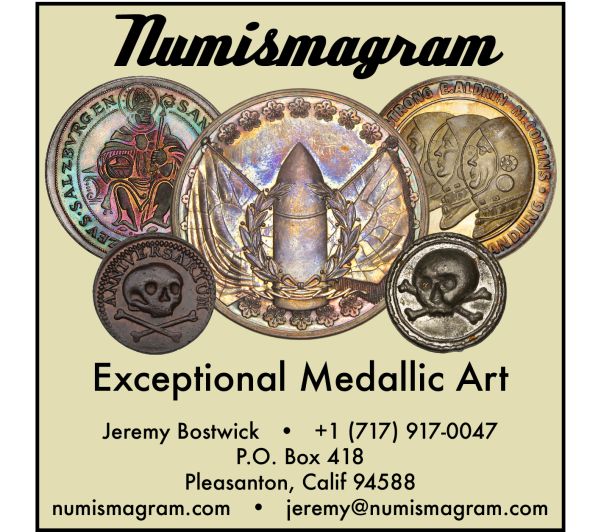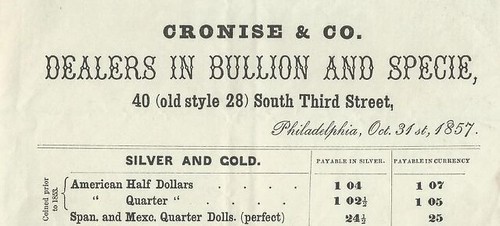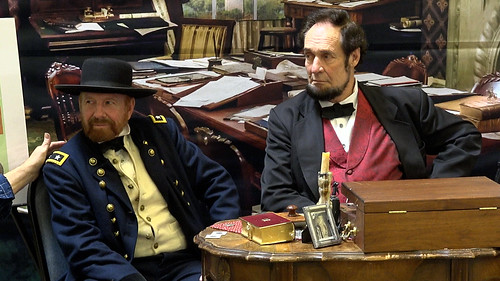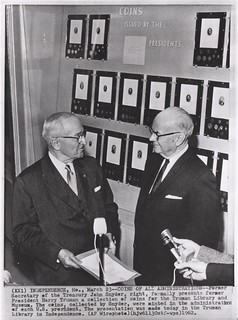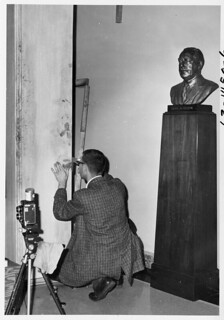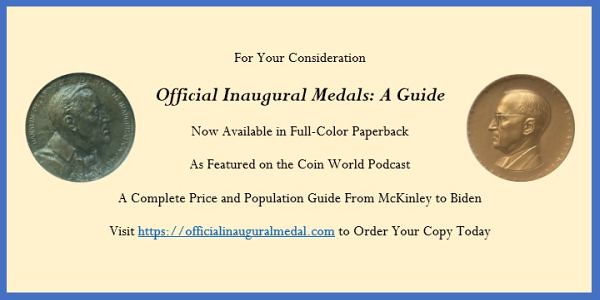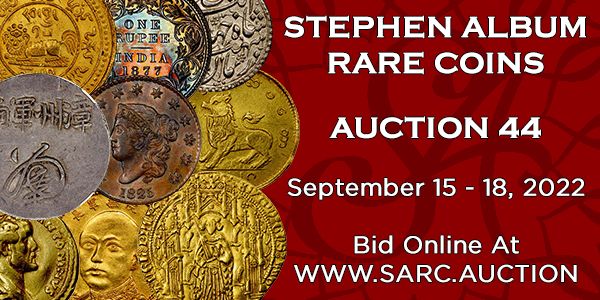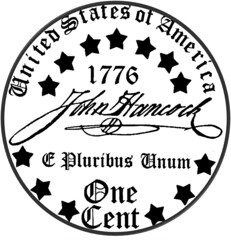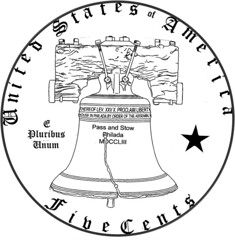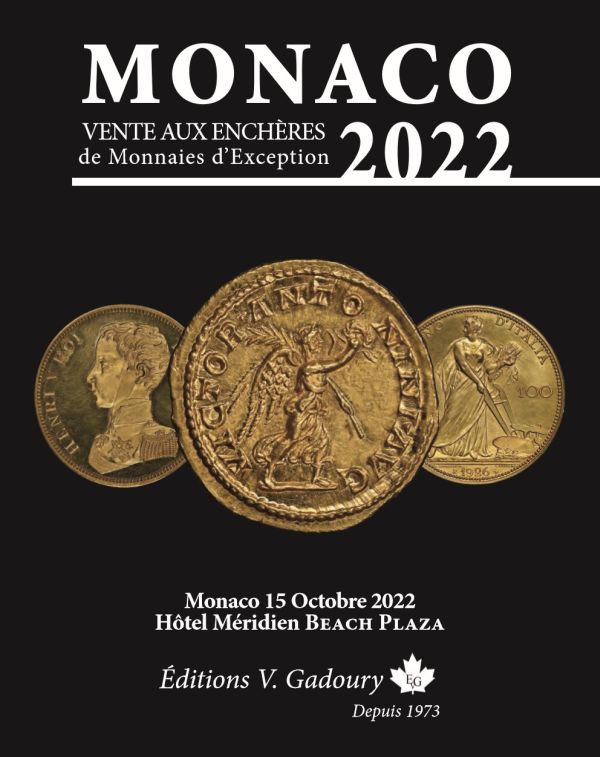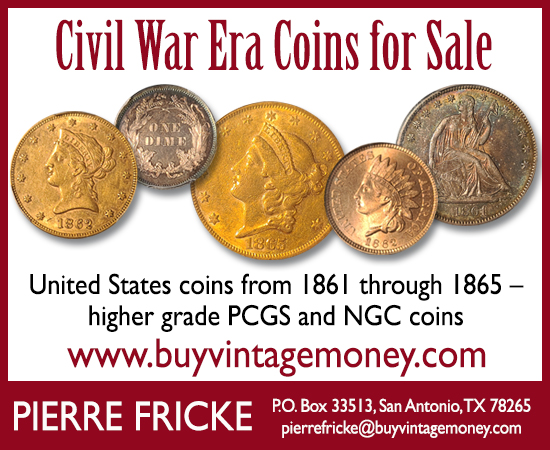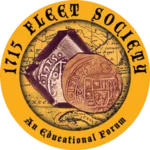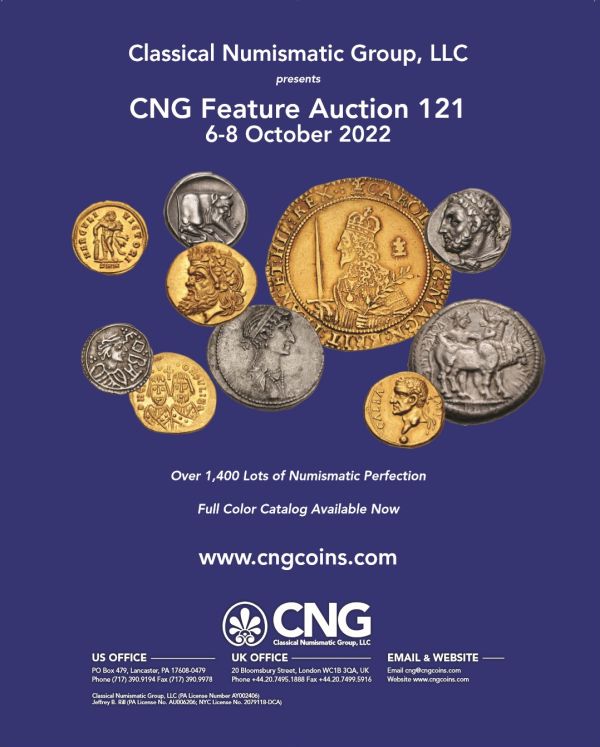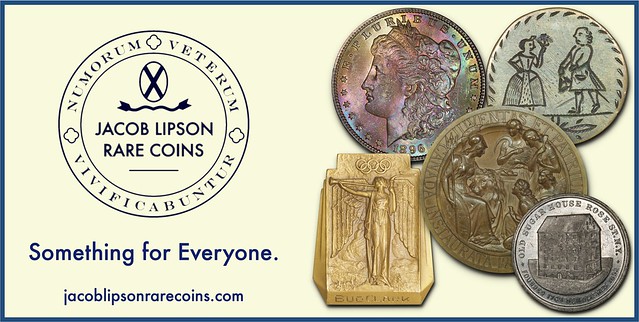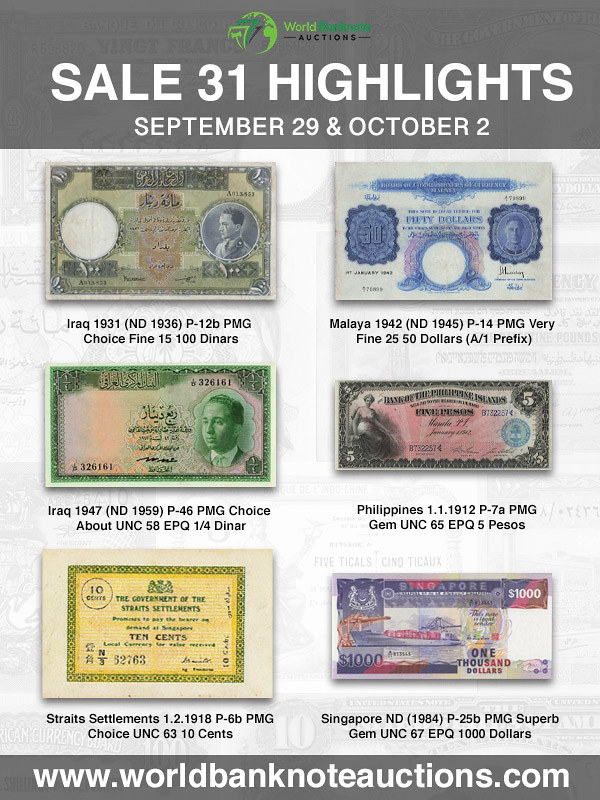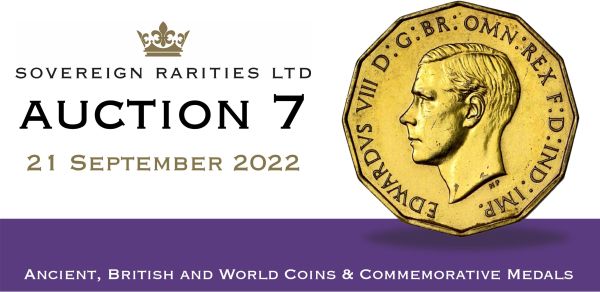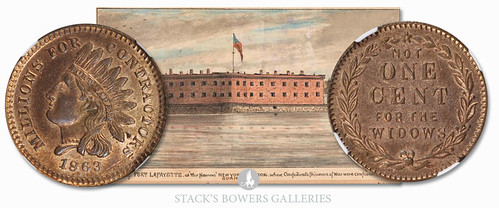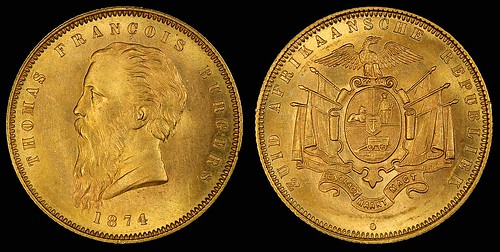
Visit our NBS Sponsors


About UsThe Numismatic Bibliomania Society is a non-profit association devoted to the study and enjoyment of numismatic literature. For more information please see our web site at coinbooks.org SubscriptionsThose wishing to become new E-Sylum subscribers (or wishing to Unsubscribe) can go to the following web page link MembershipThere is a membership application available on the web site Membership Application To join, print the application and return it with your check to the address printed on the application. Print/Digital membership is $40 to addresses in the U.S., and $60 elsewhere. A digital-only membership is available for $25. For those without web access, write to: Charles Heck, Treasurer AsylumFor Asylum mailing address changes and other membership questions, contact Chuck at this email address: treasurer@coinbooks.org SubmissionsTo submit items for publication in The E-Sylum, write to the Editor at this address: whomren@gmail.com BUY THE BOOK BEFORE THE COINSale Calendar |
- WAYNE'S WORDS: THE E-SYLUM SEPTEMBER 11, 2022
- ASYLUM AUTUMN 2022 ISSUE PUBLISHED
- NEW BOOK: PAPER MONEY IN LOUISIANA
- NEW BOOKS ON FINNISH NUMISMATICS
- BOOK REVIEW: THE DIARY OF ISAAC MICKLE
- QUEEN ELIZABETH II (1926-2022)
- DAVID B. SIMPSON (1938-2022)
- SILVER, GOLD, AND CURRENCY CONVERSION IN 1857
- VIDEO: MONIES OF THE CIVIL WAR
- TRUMAN LIBRARY THEFT, 1975 ASSAY COMMISSION
- THE ROBERT M. RAMSAY COLLECTION SALE CATALOG
- NOTES FROM E-SYLUM READERS: SEPTEMBER 11, 2022
- MORE 2026 INDEPENDENCE COMMEMORATIVE IDEAS
- UMBRIA DUCAL PALACE COIN AND MEDAL EXHIBIT
- 2022 NUMISMATIC WRITERS ANA AWARDS
- VOCABULARY TERMS: LUCKY CHARM, LUCKY PENNY
- WILLOW GENE HERREN DENISE (1904-1966)
- 1715 FLEET SOCIETY CONFERENCE
- NUMISMATICS AND SEPTEMBER 11, 2001
- STEPHEN ALBUM RARE COINS AUCTION 44
- KÜNKER AUCTION SALE 374 HIGHLIGHTS
- KÜNKER AUCTION SALE 375 HIGHLIGHTS
- CNG FEATURE AUCTION 121 HIGHLIGHTS
- MDC MONACO OCTOBER 2022 SALE
- COINS OF THE CELTIBERIANS
- DOES BYZANTINE COIN SHOW A SUPERNOVA?
- 18TH CENTURY ENGLISH GOLD COIN HOARD FOUND
- FORT LAFAYETTE CIVIL WAR TOKEN
- THE QUEEN'S CURRENCY
- LOOSE CHANGE: SEPTEMBER 11, 2022
Click here to read the thin version on the web
Click here to subscribe
Click here to access the complete archive
To comment or submit articles, reply to whomren@gmail.com
Content presented in The E-Sylum is not necessarily researched or independently fact-checked, and views expressed do not necessarily represent those of the Numismatic Bibliomania Society.
WAYNE'S WORDS: THE E-SYLUM SEPTEMBER 11, 2022
 New subscribers this week include:
Rick Dupuis of the Ontario Numismatic Society, courtesy Bob Fritsch;
Welcome aboard!
New subscribers this week include:
Rick Dupuis of the Ontario Numismatic Society, courtesy Bob Fritsch;
Welcome aboard!
Thank you for reading The E-Sylum. If you enjoy it, please send me the email addresses of friends you think may enjoy it as well and I'll send them a subscription. Contact me at whomren@gmail.com anytime regarding your subscription, or questions, comments or suggestions about our content.
This week we open with news of the latest Asylum issue, two or three new books (depending on how you count), a book review, updates from the Newman Numismatic Portal, and more.
Other topics this week include early paper money in Louisiana, Finnish coins and tokens, collectors Isaac Mickle, John Kane and David Simpson, money of the Civil War, the Truman Library coin collection theft, ANA numismatic writer awards, the 1715 Fleet Society conference, more auction previews, coin finds, and more.
To learn more about the Daniel E. Groux Broadside Sale, the numismatics of Queen Elizabeth II, exchanging silver and gold in 1857, the 1975 Annual Assay Commission, the first auction catalog image of paper money, Things Book Lovers Do, the Umbria Ducal Palace exhibit, lucky pennies, numismatics and 9/11, Edward the Black Prince, Cleopatra & Antony, and the only Celtic coin that says it is, read on. Have a great week, everyone!
Wayne Homren
Editor, The E-Sylum
ASYLUM AUTUMN 2022 ISSUE PUBLISHED
The Autumn 2022 issue of The Asylum is on the way from our sponsor, the Numismatic Bibliomania Society. Maria Fanning edits our print journal, and she submitted this report and President Tom Harrison's message. Thanks. -Editor
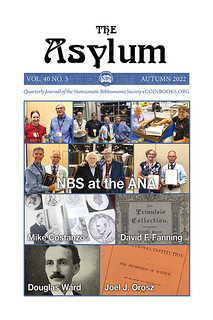 The Asylum's Autumn 2022 issue will be mailing to NBS members soon. Thanks to everyone who sent in photos from the ANA in Rosemont this year. It great to see fellow bibliomaniacs and we hope to see more of you in Pittsburgh next August.
The Asylum's Autumn 2022 issue will be mailing to NBS members soon. Thanks to everyone who sent in photos from the ANA in Rosemont this year. It great to see fellow bibliomaniacs and we hope to see more of you in Pittsburgh next August.
For the second year in a row the ANA has given The E-Sylum first place in the Electronic category of the Barbara J. Gregory Outstanding Club Publications competition. The Asylum won third place in the Special Publications category, as well. Keep the submissions coming!
We would love to receive more contributions, especially any experiences and opinions on having treasures bound, working with a bindery, and advice on when and how to do so.
NEW BOOK: PAPER MONEY IN LOUISIANA
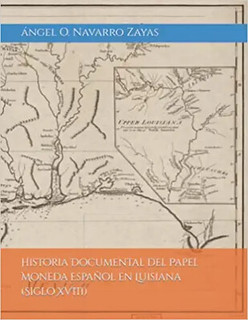 Documentary History of Spanish Paper Money in Louisiana (18th Century)
Documentary History of Spanish Paper Money in Louisiana (18th Century)
Author: Ángel O. Navarro Zayas
Publisher : Independently published (August 29, 2022)
Language : Spanish
Paperback : 173 pages
ISBN-13 : 979-8848868197
Item Weight : 1.26 pounds
Dimensions : 8.5 x 0.41 x 11 inches
Len Augsburger writes:
"Ángel O. Navarro Zayas has mined archival sources in order to provide a complete picture of the efforts related to the introduction of paper money in Spanish Louisiana. This thoroughly researched volume represents a valuable addition to existing studies on early American paper money."
NEW BOOKS ON FINNISH NUMISMATICS
Yosef Sa'ar of Elat on the Red Sea submitted these notes on a new double-book on Finnish numismatics. Thanks! -Editor
This is to report a rather unique book on Finnish numismatics. Actually it is two books in one, bound together, inverted back to back.
"Suomen Rahat 1811-2020" by Holmasto Team, 2021, is a 111 page catalog of Finnish coins and paper money. When you flip the book, you have "Suomalaiset poletit - Finska poletter" by Antti Vuori, 2021, a 70 page catalog of Finnish tokens.The publisher is Holmasto of Helsinki.
BOOK REVIEW: THE DIARY OF ISAAC MICKLE
Mike Costanzo submitted these notes on the diary of early coin collector Isaac Mickle. Thank you! -Editor
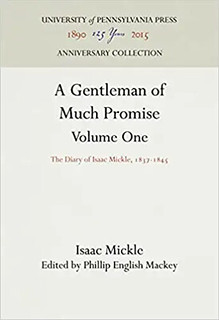 A Gentleman of Much Promise; The Diary of Isaac Mickle 1837-1845, (University of Pennsylvania Press, 1977) may be of interest due to the fact that Mickle was also a numismatist. Aside from keeping a diary, he occasionally attended coin auctions as well as visited fellow collectors.
One such visit occurred on Sunday, September 27,1840, when Mickle was seventeen years old:
A Gentleman of Much Promise; The Diary of Isaac Mickle 1837-1845, (University of Pennsylvania Press, 1977) may be of interest due to the fact that Mickle was also a numismatist. Aside from keeping a diary, he occasionally attended coin auctions as well as visited fellow collectors.
One such visit occurred on Sunday, September 27,1840, when Mickle was seventeen years old:
"I went over the river this morning to look at a collection of curious coins owned by a certain John Kane who is a complete original in the great family of fools. He carries his love for his hobby to such a length, that while he has medals and coins to the value of an hundred, nay, a thousand dollars, he hardly has a crust of bread for his children or a whole shirt for himself. Judging from his house and the appearance of every thing in it, you would suppose that poverty could make him no poorer; but judging from the cabinet of coins which he exhibits to you, you would take him to be some princely antiquarian and connoisseur, to whom the riches of Potosi* would be no object. Such are the eccentricities of man!"
QUEEN ELIZABETH II (1926-2022)
David Pickup submitted these thoughts on the passing of Queen Elizabeth II. -Editor
DAVID B. SIMPSON (1938-2022)
Scott Miller submitted this obituary of ANS and New York Numismatic Club officer David Simpson. Thank you. The photo is of David visiting the Cornell campus in 2020. -Editor
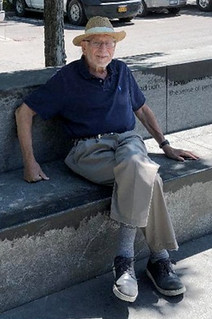 David Baruch Simpson (1938-2022) passed away on September 5, 2022. A numismatist for most of his life, he began collecting world crowns, and later turned to Greek Imperial (Roman Provincial) coins depicting mythological subjects. Many of these were shown in an exhibition at Cornell Art Museum in 1994, and published in the accompanying catalogue
David Baruch Simpson (1938-2022) passed away on September 5, 2022. A numismatist for most of his life, he began collecting world crowns, and later turned to Greek Imperial (Roman Provincial) coins depicting mythological subjects. Many of these were shown in an exhibition at Cornell Art Museum in 1994, and published in the accompanying catalogue Emblems of Authority: Greek and Roman Coins from Two Alumni Collections
. In recent years, David turned his collecting interest to medallic art, with an emphasis on World War I, German Expressionist medals, and medals depicting skulls and skeletons. Another interest was in modern art medals; he frequently lent material for exhibition at Medialia Gallery in New York City.
David Simpson joined the New York Numismatic Club in 1979. Following the club's Cursus Honorum, he served as president from 2002-4, and for many years was on the Board of Directors. David was also active as a Fellow of the American Numismatic Society, and was a member of Council for several years.
SILVER, GOLD, AND CURRENCY CONVERSION IN 1857
The latest addition to the Newman Numismatic Portal is a printed circular from 1857 listing rates for exchanging silver and gold in Philadelphia. Project Coordinator Len Augsburger provided the following report. Thanks. -Editor
VIDEO: MONIES OF THE CIVIL WAR
These are selections from the David Lisot Video Library that feature news and personalities from the world of coin collecting. David has been attending coin conventions since 1972 and began videotaping in 1985. The Newman Numismatic Portal now lists all David's videos on their website at:
https://nnp.wustl.edu/library/multimediadetail/522852
Here's one on my favorite numismatic subject, monies of the U.S. Civil War. -Editor
Monies of the Civil War: What Was in President Lincoln's & General Sherman's Pockets
Moderators: Rick Lank & Rebecca Rush, Talisman & Coin Productions,
with Dennis Boggs (Abraham Lincoln) & Kris Gulvansen (General Sherman),
David Lisot, Video Producer, CoinTelevision.com.
May 20, 2022.
The Civil War caused turmoil with the finances of both the Union and the Confederacy. Learn what constituted money at that time and what would have been in people's pockets.
David adds:
"Hearing history told through the people that lived at the time is particularly interesting. The Pennsylvania Association of Numismatists (PAN) is dedicated to promoting coin collecting by sponsoring educational lectures. This Civil War Showcase is told by Abe Lincoln and General William T. Sherman at the PAN Convention."
An excerpt of the video is available for viewing on the Coin Television YouTube Channel at:
https://youtu.be/NmwVsqMAk2E
TRUMAN LIBRARY THEFT, 1975 ASSAY COMMISSION
Dave Lange submitted some interesting new numismatic photos. Thanks! -Editor
I acquired a couple more numismatic photos from deaccessioned archives.
The first shows John Wesley Snyder, Treasury Secretary (1946-53) under President Harry S Truman, presenting his former boss with a collection of coins for the Truman Library in Independence, Missouri. Snyder had assembled an example of each coin denomination struck during every presidential administration to date (March 23, 1962). Just months later, in November, the coins were stolen. I believe they were later replaced by the numismatic community, as I recall having seen such an exhibit at the ANA Museum about 40 years ago, evidently on loan from the Truman Library. A public domain image by J. W. Porter of the Kansas City Star, now held by the Truman Library, is also attached. It shows laboratory supervisor Jason T. White taking evidence from the crime scene.
THE ROBERT M. RAMSAY COLLECTION SALE CATALOG
Kerry Wetterstrom submitted this note on Bob Ramsay and the auction catalogs of Bob Polito. Thanks! -Editor
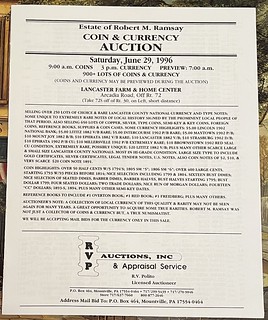 I read the latest issue of The E-Sylum, which is always a highlight of my Monday mornings! My attention was immediately grabbed by Pete Smith's note on Robert M. Ramsay. I knew Bob Ramsay, as he was a fellow member of the Red Rose Coin Club here in Lancaster and a regular attendee at club meetings. I remember him as knowledgeable, but also cantankerous. He took pleasure in shocking members by dropping the occasional F-Bomb during one of his frequent outbursts on something that upset him.
I read the latest issue of The E-Sylum, which is always a highlight of my Monday mornings! My attention was immediately grabbed by Pete Smith's note on Robert M. Ramsay. I knew Bob Ramsay, as he was a fellow member of the Red Rose Coin Club here in Lancaster and a regular attendee at club meetings. I remember him as knowledgeable, but also cantankerous. He took pleasure in shocking members by dropping the occasional F-Bomb during one of his frequent outbursts on something that upset him.
I attended his estate sale conducted by another member and past president of the RRCC, Bob Polito. Bob's auction catalogs are best described as listings
, and I have attached images of the front cover and two pages from the beginning of the national bank note section. The catalog is 12 pages, self covered, without any illustrations. Bob Ramsay had an important collection of Lancaster County national bank notes, and I kept the catalog for my archives.
NOTES FROM E-SYLUM READERS: SEPTEMBER 11, 2022
Happy Anniversary
Regarding The E-Sylum's 24th anniversary,
John W. Adams writes:
 "Out of little acorns grow tall oaks ! Congratulations on outperforming even
the wildest hopes and expectations !! Happy 24th !!!"
"Out of little acorns grow tall oaks ! Congratulations on outperforming even
the wildest hopes and expectations !! Happy 24th !!!"
Thank you! -Editor
To read the earlier E-Sylum article, see:
THE E-SYLUM'S 24TH ANNIVERSARY
(https://www.coinbooks.org/v25/esylum_v25n36a02.html)
Other topics this week include the NLG Book of the Year, dealer Charlie Dochkus, and the papers of Clifford Hewitt. -Editor
MORE 2026 INDEPENDENCE COMMEMORATIVE IDEAS
Wayne Pearson passed along these refinements to his earlier design ideas for coins to mark the 2026 semiquincentennial of U.S. independence. -Editor
UMBRIA DUCAL PALACE COIN AND MEDAL EXHIBIT
Jeff Rock submitted this nice report on a pleasant numismatic surprise seen on tour in Italy. Grazie! -Editor
A Numismatic Surprise in Umbria, Italy: Ducal coins and medals on display
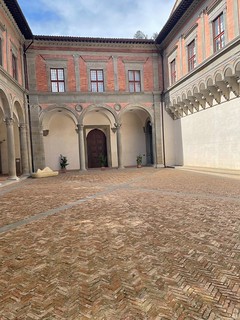 As every
As every coin wife
knows, numismatists seem to have a special radar that leads them directly
to coins, even when far away on vacation, somewhere with no advance knowledge of
numismatics in the region. Such was the case for me, spending a couple weeks in Umbria, the
central part of Italy. A day trip of an hour-and-change on a bus to the medieval cliff-face town
of Gubbio led to the usual wandering of streets, stopping in small churches, looking at Italian
clothes that could never possibly fit an American frame, grabbing a gelato or two in the summer
heat and, of course, stopping in at museums and historical buildings.
One such building was the Ducal Palace, built in the Renaissance style in 1470, literally atop pre-existing medieval buildings, and is the only Renaissance building in this small city. The contents were stripped off and sold by later owners (including a wonderful painted studio that is now in the Metropolitan Museum of Art in New York), so there is little there in the way of period furniture or original paintings, though the upper floor has a trove of paintings of the area owned by the city and private collectors.
2022 NUMISMATIC WRITERS ANA AWARDS
The ANA presented several awards to numismatic writers this year. Congratulations to all! -Editor
The American Numismatic Association's 2022 literary awards – recognizing articles published in the 2021 volume of its official magazine, The Numismatist – were presented during the Member and Awards Celebration at the Chicago World's Fair of Money® on Aug. 18. The Numismatist was launched by ANA founder and first editor Dr. George F. Heath in 1888.
VOCABULARY TERMS: LUCKY CHARM, LUCKY PENNY
Here's another entry from Dick Johnson's Encyclopedia of Coin and Medal Terminology. -Editor
Lucky Charm, Lucky Penny. A medallic item intended to be carried by a person, the item purporting to bring good luck; an amulet or talismanic medal. Ancient man carried such talismans; Egypt was a source for many of these since the time of the pharaohs. Such items contain symbolic designs, often highly mysterious. The custom has continued throughout the centuries to modern time were lucky charms, pocket pieces, pendants and other medallic forms are produced, often encouraged by religious, fraternal or other groups.
WILLOW GENE HERREN DENISE (1904-1966)
In response to Pete Smith's question last week, Dave Lange wrote:
"I don't know for certain that she was the ANA's first female librarian, but in my reading I frequently come across the name D. Dee DeNise, who became the librarian in 1951. It seems that her first name was Gene, but since that's typically the spelling of a male she evidently preferred to go by Mrs. D. Dee DeNise. How she arrived at that name I don't know."
Pete Smith submitted this article on ANA Librarian Mrs. D. Dee De Nise. Thanks! -Editor
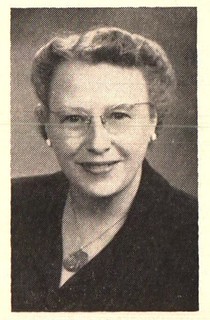 Last week I posed the question,
Last week I posed the question, What was the first name of the first woman to serve as ANA
Librarian?
The first woman librarian was generally known as Mrs. D. Dee DeNise. There were also
references to Gene DeNise. With Gene
generally considered a man's name, and Dee
generally considered a woman's name, the name of the librarian and her husband may have been
confused. So, who was D. Dee DeNise?
Dwight Dee DeNise was born in Rock Springs, Colorado, on February 19. 1902. He was raised on the ranch of his parents, George and Catherine Gantz DeNise. He graduated from the University of Washington. He worked as an electrical engineer for Seattle City Light.
THE BOOK BAZARRE
1715 FLEET SOCIETY CONFERENCE
Ben Costello of the 1715 Fleet Society passed along this information about the group's upcoming conference. Thanks - sounds like a great event. -Editor
The 1715 Fleet Society will host the conference at the Holiday Inn Oceanside, which was a popular hangout for divers back in the early days of salvaging the wreck sites of the 1715 Fleet.
The conference is three days. The first day, October 30 (Sunday) will be a Meet and Greet for authors who have written about the Fleet. There will be about 8 authors. This event is open to members and non members alike. It will start at noon and last to 600pm.
NUMISMATICS AND SEPTEMBER 11, 2001
The terrorist attacks of September 11, 2001 impacted everyone everywhere in ways large and small. No one alive that day will forget where they were and everything that happened. Here in The E-Sylum we had some first-person accounts from readers over the years. On this anniversary day, we're republishing some of these here. ANA's Outstanding Young Numismatist of the Year Eric Cheung was living near City Hall in Manhattan before heading off to Stanford. -Editor
STEPHEN ALBUM RARE COINS AUCTION 44
Here's the press release for Stephen Album Rare Coins upcoming Auction 44. -Editor
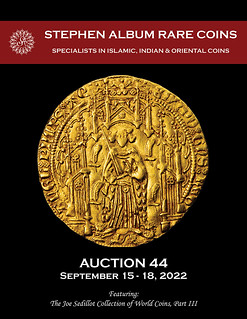 Stephen Album Rare Coins will hold its Auction 44 on September 15-18, 2022 at its offices in Santa Rosa,
California. The Auction is made up of 3,250 lots of Ancient, Islamic, Chinese, Indian, and General World
Coins. There is also a small selection of Ethnographic money. The pre-sale estimate is approximately
$1.4 million USD, with the final total expected to far exceed that amount.
Stephen Album Rare Coins will hold its Auction 44 on September 15-18, 2022 at its offices in Santa Rosa,
California. The Auction is made up of 3,250 lots of Ancient, Islamic, Chinese, Indian, and General World
Coins. There is also a small selection of Ethnographic money. The pre-sale estimate is approximately
$1.4 million USD, with the final total expected to far exceed that amount.
Featured in the sale is the Joe Sedillot Collection of World Coins (Part III) which includes a wide array of type coins from numerous countries. A significant number of the coins in the collection are in choice condition and were selected for encapsulation in PCGS holders. Part I was offered in the firm's January 2022 sale and Part II was offered in May 2022. Many pieces went for multiple times estimate and some items set new price records. Part III largely consists of European coins including Austria, Belgium, Denmark and France. Additional parts of the collection will be offered in subsequent auctions in 2023.
KÜNKER AUCTION SALE 374 HIGHLIGHTS
Here's a press release with highlights from the upcoming Künker auction sale 374. -Editor
Catalog 374: Hesse and the Hessian Area – The Dr. Hans-Jürgen Loos Collection, Part 1
28 September will be thoroughly dedicated to Hesse and the entire Hessian area. Künker will offer the first part of the Dr. Hans-Jürgen Loos Collection. The economist, who headed the accounting department of a large corporation, enjoyed numismatics as a way to unwind from his daily work. An enthusiastic local historian, he was keen to create a collection that would provide an overview of Hesse's monetary history that was as complete as possible. He called his about 1,400 issues from seven centuries Minted Hessian History
. The collector stated that he made the deliberate choice not to build up a complete special collection of individual territories, but to collect a representative cross-section of Hessian coin history as an expression of the historic development of the Hessian region in the area of today's Hesse
. Modestly, Dr. Loos mentions some very rare specimens
in his preface. In fact – as in any great collection – there are both common as well as extremely rare specimens to find, which is why anyone who is interested in one of the areas that are located in today's Federal State of Hesse should study this catalog very carefully.
KÜNKER AUCTION SALE 375 HIGHLIGHTS
Here's a press release with highlights from the upcoming Künker auction sale 375. -Editor
Auction 375: Nuremberg / Selected Lösers from the Friedrich Popken Collection / Coins and Medals from Medieval and Modern Times / German Coins after 1871
The last two days of the auction week are dedicated to auction 375, which includes further special collections. For example, another part of the Frederick Popken Collection with selected lösers can be marveled at. The auction starts with a Franconian regional collection, including gold and silver coins from Nuremberg as well as a rich variety of medals by Nuremberg artists. Particularly abundant is the selection of rare tokens that is offered as part of this collection. There are also some treasures for bibliophiles among the offer.
As always, Künker presents a broad selection of German coins and medals from Anhalt to Würzburg, from the Middle Ages to the founding of the German Empire, from three-digit to five-digit estimates.
CNG FEATURE AUCTION 121 HIGHLIGHTS
Here's the press release for Classical Numismatic Group's Auction 121, closing October 6-8, 2022. -Editor
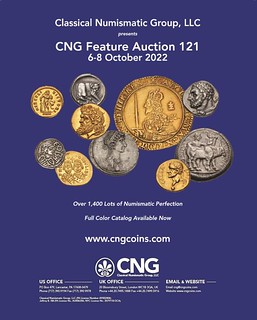 A remarkable double-portrait coin of the famous lovers Cleopatra and Mark Antony,
a spectacular gold stater of Pantikapion, and a splendid gold Triple Unite of King Charles I of England are
among the highlights of Classical Numismatic Group's Feature Auction 121, closing October 6-8 on the firm's
website, www.cngcoins.com.
A remarkable double-portrait coin of the famous lovers Cleopatra and Mark Antony,
a spectacular gold stater of Pantikapion, and a splendid gold Triple Unite of King Charles I of England are
among the highlights of Classical Numismatic Group's Feature Auction 121, closing October 6-8 on the firm's
website, www.cngcoins.com.
With 1,441 Ancient Greek, Roman, Byzantine, World and British coins at estimates totaling nearly $3.5
million, Feature Auction 121 is one of the CNG's impressive offerings ever, according to Michael Gasvoda,
Managing Director. Aside from our annual Triton auctions held in conjunction with the January New York
International Numismatic Convention, this is the strongest Feature Auction we've had in CNG's nearly five-decade history,
Gasvoda said. We are very thankful to our consignors for making CNG 121 such an
outstanding auction. With the market for exceptional coins running strong, I am sure the response from our
bidding clientele will be as fantastic as the offering.
MDC MONACO OCTOBER 2022 SALE
Here's the press release for the October 2022 MDC Monaco sale. Beautiful coins! -Editor
1473 exceptional lots will be back under the hammer on the 13th and 14th of October in Monaco. MDC auction will for sure be the most important numismatic event of the end of the year. The coins and medals which will be presented go from antiquity to present days and are from all over the world. The auction will be held by the expert Nicolas Gimbert at the Métropole Hôtel, in Monaco.
Several remarkable sets will be presented:
-
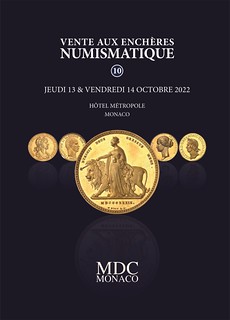 LOT 49. Caligula (37-41). Aureus with Divine Augustus 37-38, Lyon
LOT 49. Caligula (37-41). Aureus with Divine Augustus 37-38, Lyon
- LOT 75. Constantine I (307-337). Solidus ND (326), Thessaloniki.
- LOT 312. Charles V (1364-1380). Gold Royal ND (august 1364).
- LOT 377. Louis XIII (1610-1643). Gold pattern of 10 Louis, laureated head and draped bust, 1640, A, Paris.
- LOT 516. Louis XVI (1774-1792). Gold medal, Paris Royal Society of Medicine, by Duvivier ND, Paris.
- LOT 663. Louis-Philippe I (1830-1848). 5 francs Domard, Gold strike, raised lettered edge, Proof 1831, A, Paris.
- LOT 761. IIIrd Republic (1870-1940). Gold pattern of 100 francs Génie, large lettering, Proof 1878, Paris.
- Lot 767. IIIrd Republic (1870-1940). 100 francs Génie 1905, A, Paris.
- LOT 1018. James I Stuart (1603-1625). Gold Royal (Rose Ryal), third emission ND (1621-1623), London.
- Lot 1020. Scotland, Charles I (1625-1649). Gold Unite, Third emission, by Nicolas Briot ND (1637-1642),Edinburgh.
- LOT 1026 William III (1694-1702). 5 guineas, 2nd bust, 1701, London.
-
LOT 1047. Victoria (1837-1901). Gold pattern of the
Una and the lion
5 pounds, Proof 1839, London. - LOT 1297. Venice, Paolo Renier (1779-1789). Osella of 4 sequins 1784 - Year VI, Venice.
- LOT 1325. Victor-Emmanuel III (1900-1946). Gold pattern of 100 lire with Minerva and Agriculture by S. Johnson, Proof and matte 1903, Milan (Johnson).
COINS OF THE CELTIBERIANS
I learn something new with every one of Mike Markowitz' CoinWeek articles on ancient coinage. Here's an excerpt from an August 31, 2022 piece on the coins of the Celtiberians -Editor
The central plateau (Meseta in Spanish) was inhabited by Celtic tribes who migrated across the Pyrenees in several waves, beginning perhaps in the sixth century BCE. They merged with the indigenous population, creating a unique culture described by modern historians as Celtiberian
. Skilled metal workers, the Celtiberians developed the short, double-edged Spanish
sword that was adopted by the ancient Romans as the lethal weapon of the legions. Celtiberians fought a long series wars against Rome, from 181 BCE to their ultimate defeat by the forces of Emperor Augustus in 19 BCE.
Coins issued by Celtiberian cities are an important source for understanding this era of Spanish history, from the third century BCE to the final Roman conquest. Without the names of rulers, Celtiberian coins generally can be dated only approximately, on the basis of find context and hoard evidence. As many as 160 mints issued coins during the second and first centuries BCE, some of still uncertain location.
DOES BYZANTINE COIN SHOW A SUPERNOVA?
Arthur Shippee passed along this article speculating that a Byzantine coin may show a supernova. Thanks. -Editor
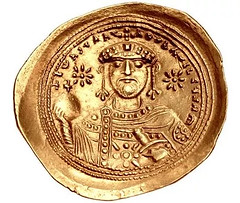 In A.D. 1054, a nearby star ran out of fuel and blew up in a dazzling supernova explosion. Though located 6,500 light-years away, the blast was clearly visible in the skies over Earth for 23 days and several hundred nights after.
In A.D. 1054, a nearby star ran out of fuel and blew up in a dazzling supernova explosion. Though located 6,500 light-years away, the blast was clearly visible in the skies over Earth for 23 days and several hundred nights after.
The explosion, now known as SN 1054, was so bright that Chinese astronomers dubbed it a "guest star," while skywatchers in Japan, Iraq and possibly the Americas recorded the explosion's sudden appearance in writing and in stone. But in Europe — which was largely ruled at the time by the Byzantine Emperor Constantine IX and the Christian church — the big, bedazzling explosion in the sky was never mentioned, not even once.
THE BOOK BAZARRE
R.S. Yeoman and His Remarkable Red Book,also tells the history of Whitman Publishing as well as his own unique life story in and out of numismatics. Enjoy more than 100 years of fascinating numismatic history in 352 richly illustrated pages, 8.5 x 11 inches, hardcover. Order your copy online at Whitman.com , or call 1-800-546-2995.
18TH CENTURY ENGLISH GOLD COIN HOARD FOUND
I didn't manage to get this story into last week's issue. Nice find. Thanks to Arthur Shippee and David Pickup for passing it along. -Editor
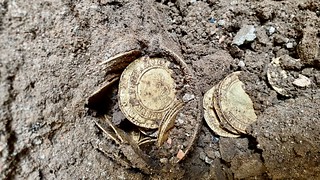 A house refurbishment in northern England has uncovered a trove of gold coins, which could be worth up to £250,000 ($290,000) at auction next month.
A house refurbishment in northern England has uncovered a trove of gold coins, which could be worth up to £250,000 ($290,000) at auction next month.
The discovery is one of the biggest hoards of 18th century English gold coins ever uncovered in Britain, according to auction house Spink & Son in a press release sent to CNN on Thursday.
FORT LAFAYETTE CIVIL WAR TOKEN
As part of the publicity for the upcoming Susan Trask Collection of Civil War Tokens sale, Stack's Bowers published an article by Dave Bowers on the Fort Lafayette anti-contractor token. -Editor
Shown here is an example of Patriotic token Fuld-97/389 d from our March 2021 auction (lot 8090). The obverse has MILLIONS FOR CONTRACTORS, and on the reverse NOT ONE CENT FOR WIDOWS. The headband is inscribed FORT LAFAYE, short for Fort Lafayette. The issuer of this token protested federal policies and scandals of the era—probably the most dramatic of such in the Civil War token series.
THE QUEEN'S CURRENCY
Howard Berlin passed along this Explainer article about Queen Elizabeth II's image on currency. Thanks. -Editor
The queen's currency
She first appeared on money when she was still a princess. That was in 1935, when Canada's 20 dollars bill featured eight-year-old Princess Elizabeth, whose grandfather King George V was then the monarch, as part of a new series of notes.
LOOSE CHANGE: SEPTEMBER 11, 2022
Here are some additional items in the media this week that may be of interest. -Editor
Arthur Shippee passed along this article about pre-colonial African coins. Thanks. -Editor
The Aksumite of Northern Ethiopian are the early tribes of Africa to introduce coins in the 2nd to the 9th century as a means of trading. These coins were made of gold, a little bronze and a minute quantity of silver.
The Aksumite kings initially decreed the coins should bear Greek inscriptions, but, was later amended and Amharic text was embossed on the coins, according to Britannica.
The traditional coins which were used by the Ethiopians temporarily went into extinction as a result of foreign alliances and allegiance.
King Menelick, emperor of Ethiopia between 1889 and 1913, restored the coins but rather as silvers with an embossment of the Lion of Judah. He believed he was the direct descendant of King Solomon and Queen Sheba.
The Ethiopians were not the only African nations to have started using coins as means of transaction before the arrival of the Europeans.
To read the complete article, see:
Coins used by African nations before colonialism and post-independence
(https://face2faceafrica.com/article/coins-used-by-african-nations-before-colonialism-and-post-independence)
Other topics this week include a controversial challenge coin, and a swimmer's artsy photo with her medals. -Editor

